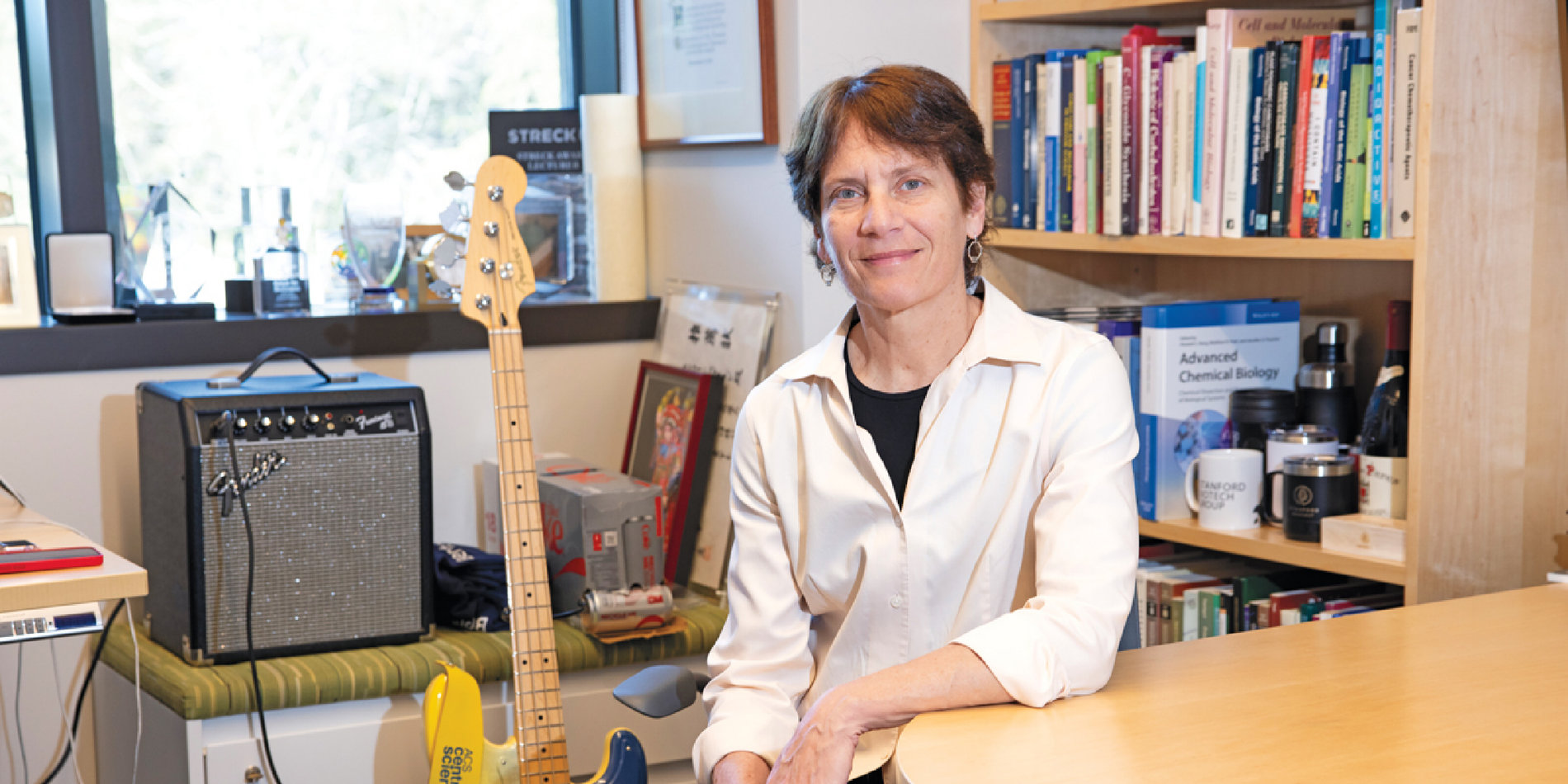Q&A with Brooke Husic: How a computer simulation of proteins can help understand disease and develop drugs
Protein are responsible for a variety of essential jobs inside cells—they carry messages, defend against pathogens, and act as microscopic chemists. Furthermore, their malfunction can cause diseases ranging from Alzheimer’s to diabetes. To perform their roles and maintain healthy cells, proteins need to fold into particular shapes that also remain dynamic and responsive. Graduate student Jaqueline Carozza spoke with Brooke Husic, a second year chemistry PhD student who researches how proteins move in a computational protein folding lab led by Vijay Pande, a professor of chemistry and ChEM-H fellow. Husic discussed how a model of protein movement is like The Sims computer game, what a movie of protein folding looks like and how computational chemists tackle lab clean-up.
What are proteins?
Proteins are strands of similar building blocks called amino acids. I think of a protein like a candy necklace, where each piece of candy is one amino acid and the strand arranges into a bundle. Proteins are small enough that you can’t see them in a microscope, so if you want to see what they look like, you have to crystallize, or freeze, them. You can bounce light at the frozen crystals and figure out the structure based on what the light looks like when it bounces back to you, which is called crystallography. From this, you only get the frozen structure of the protein, but in reality proteins move—they open and close and fold—and you can’t figure out how they do that with crystallography.
How do you use computational chemistry to study the movement of proteins?
We can simulate how proteins move using molecular dynamics. In molecular dynamics, you program in how proteins are allowed to move using Newton’s equations of motion and other rules of physics and chemistry—for example, two atoms in the protein can’t be on top of each other. This set of rules is called a force field. You program in your force field for the protein, and then press “go” like a movie. I use a metaphor based on the computer game The Sims [a simulation game where the player constructs lives for virtual characters called “Sims”]. In the game, you make your Sims, you build them houses, and you give them personalities and rules for how they interact and where they’re allowed to go. These rules are like your force field. Then you turn on the “free will” setting and watch them live. This is just what we do with our proteins—we let them go after giving them basic rules, and the result is a movie of how they move and fold.
How do you record these movies?
People use molecular dynamics simulations to make movies of proteins, but simulations are often too short to get a picture of what the protein is doing, due to limitations on computing power. The Pande lab has achieved longer simulation times by implementing software called Folding@home, which any individual can download. It harnesses computing power by using your computer’s downtime, like at night when you’re asleep. We do tens of thousands of short simulations on different computers around the world supplied by tens of thousands of donors, and we can string together these tiny simulations into a much longer movie. Most of your movie is the protein jiggling. There aren’t big changes, it’s just sitting there shaking a little bit and then once in a while something will happen, like some loop will fold inward or a strand will curl up. We need a way to see what’s happening in this movie in a non-subjective way, and that’s where the statistical modeling comes in.
How does a statistical model help you identify the important parts of the movie?
Going back to The Sims metaphor, we care about a Sim going to work or going out to dinner, but we don’t care about the Sim pacing around the office. The slower, bigger motions tell us more about the Sim’s life. Similarly, we don’t care about a protein jiggling, we care about the big looping or folding. The problem is when you look at these slow processes you sometimes find rare freak events. A bad way to make conclusions about actual human life by watching a movie of the Sims is to see something crazy like the oven catching on fire, and then conclude that, because the oven caught on fire, the oven was purchased to burn down the house. That’s not why humans have ovens. Our statistical models of proteins guide us away from over-interpreting random but exciting events, like the oven catching on fire, and toward understanding the protein’s fundamental properties, analogous to human nature in The Sims.
How do theoretical and experimental methods to study proteins come together?
Theory can lay the groundwork to give experimentalists an idea of which experiments they should try. For example, you can simulate a protein misbehaving in a disease state, then you can design a drug to prevent it from doing that bad thing. If a protein looks like a Pac-Man and the bad thing it’s doing is eating something, we could design a drug that fills the mouth of the Pac-Man protein so it can’t close on anything else. Then experimentalists can test this drug in the lab.
What does a day in the Pande lab look like for you and your labmates?
I improve the tools that my labmates use to model specific proteins. I do three main things: write code, execute commands, and analyze data—all of these involve me sitting at a computer screen and look very similar to an outside observer! One standard lab activity that is different in a theoretical group is lab clean up: It involves piling up all of our broken keyboards and mice, spraying our keyboards with pressurized air, and finally having a beer in the lab.



